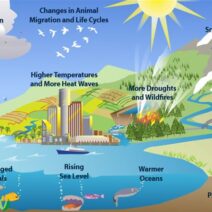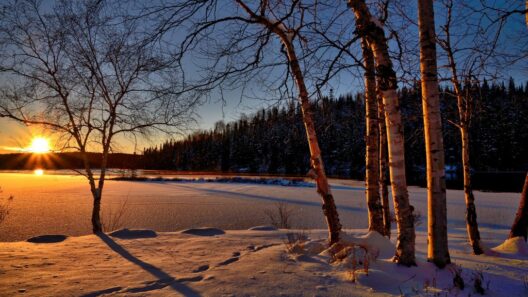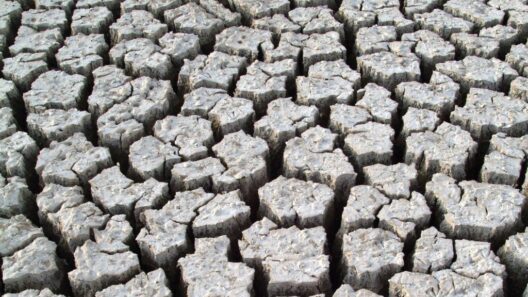Temperate forests, characterized by their distinctive climate, lie between the polar regions and the tropics. This unique zone enjoys a mild climate, featuring a moderate amount of precipitation evenly distributed throughout the year. Unlike their tropical counterparts, temperate forests exhibit a remarkable capacity for seasonal changes, offering a plethora of ecological phenomena—from vibrant autumn foliage to serene winter snowscapes. Understanding the climate of temperate forests is crucial for appreciating the intricate balance of life they support and the challenges they face in an era of climate upheaval.
The climate in temperate forests can be described through various key attributes, notably temperature, precipitation, and seasonal variations. Most regions considered temperate are situated between 30 and 60 degrees north and south latitude, facilitating a climate where temperatures can vary significantly from season to season. This oscillation is one of the most defining features of temperate forests, giving rise to diverse ecological roles and species adaptations.
During the warmer months, average temperatures typically range from 20 to 25 degrees Celsius (68 to 77 degrees Fahrenheit). This warm period coincides with ample sunlight and increased photosynthetic activity, prompting a burst of life and growth. Tree canopies become lush and green, and the forest floor teems with understory plants that flourish under the dappled light. Shade-tolerant species, such as ferns and wildflowers, thrive in this microclimate, showcasing how temperature can dictate biodiversity patterns.
Conversely, winter ushers in a stark transformation. Temperatures can drop significantly, often falling below freezing, particularly in the northern expanses of temperate regions. Snow blanketing the forest floor acts as an insulating barrier, protecting root systems from the harshest of conditions. Some species of trees, like conifers, demonstrate remarkable adaptations, such as needle-like leaves designed to shed snow and minimize moisture loss. This winter dormancy is a vital period for many organisms, allowing them to conserve energy until the rebirth of spring.
Precipitation in temperate forests is noteworthy for its consistency, generally ranging from 75 to 150 centimeters (30 to 60 inches) annually. Rainfall is relatively evenly distributed across the seasons, although late-summer storms may deliver intense bursts of precipitation. This wet climate engenders the rich soil that nurtures the forest, composed of layers of organic matter, minerals, and nutrients. Such a foundation fosters the growth of various plant species, including hardwoods like oak, maple, and hickory, which are well-adapted to the nutrient-rich conditions.
The phenomena known as “seasonal changes” is particularly captivating in temperate forests. Spring heralds the awakening of flora and fauna. As temperatures gradually rise and daylight increases, trees leap from dormancy, unfurling new leaves and blossoms. Migratory birds return, filling the canopy with their calls, while abundant insects emerge, rekindling interactions within the ecosystem. This period is crucial for pollinators as they help facilitate the reproductive processes of blooming plants.
Summer follows, characterized by vigorous growth. Sunlight penetrates the canopy, fostering a vibrant understorey. The forest engages in a bustling cycle of photosynthesis, contributing to an awe-inspiring display of life. However, this thriving system must navigate fluctuations in temperature and occasional droughts, testing the resilience of its inhabitants. Plants exhibit an array of water conservation strategies, leading to diverse adaptations that ensure survival amid climatic variations.
As summer wanes, the onset of autumn brings about a visual spectacle. Leaves transform into a medley of vibrant hues—reds, oranges, and yellows dominate the landscape, signaling change. This phase is more than aesthetically pleasing; it plays a pivotal role in the life cycle of these forests. Trees begin to shed their leaves to minimize water loss and reduce the energy demands of maintaining foliage during the winter months. The nutrient-rich fallen leaves accumulate on the forest floor, breaking down to enrich the soil—a harmonious cycle perpetuating future growth.
Winter’s arrival is the culmination of this annual cycle. Not all species respond the same way; while some trees stand bare, others, like evergreens, retain their foliage. The silence that blankets the forest during winter conceals a complex web of interactions continuing below. Critters such as squirrels and deer adapt their behaviors, some hibernating or migrating to access food sources. The stark, serene environment of winter serves as a reminder of nature’s resilience and interconnectedness.
However, temperate forests face an array of challenges, particularly due to climate change. Altered precipitation patterns may lead to increased flooding or prolonged droughts, impacting the delicate balance of these ecosystems. Furthermore, shifting temperature ranges threaten the delicate relationships between species and can lead to the introduction of invasive plants and pests, which disrupt native flora and fauna. The response of temperate forests to these disturbances is not merely a matter of survival—it poses a question of identity in an ever-evolving climate.
Ultimately, temperate forests exemplify a realm where mild weather intertwines with seasonal changes, creating an intricate tapestry of ecological diversity. Understanding these climates not only emphasizes their importance but also reveals the urgent need for conservation strategies. Through fostering a sense of appreciation and awareness of these ecosystems, we can inspire collective action to mitigate the impacts of climate change. By doing so, we make the step towards securing the future of temperate forests and the myriad life forms that depend on them.





